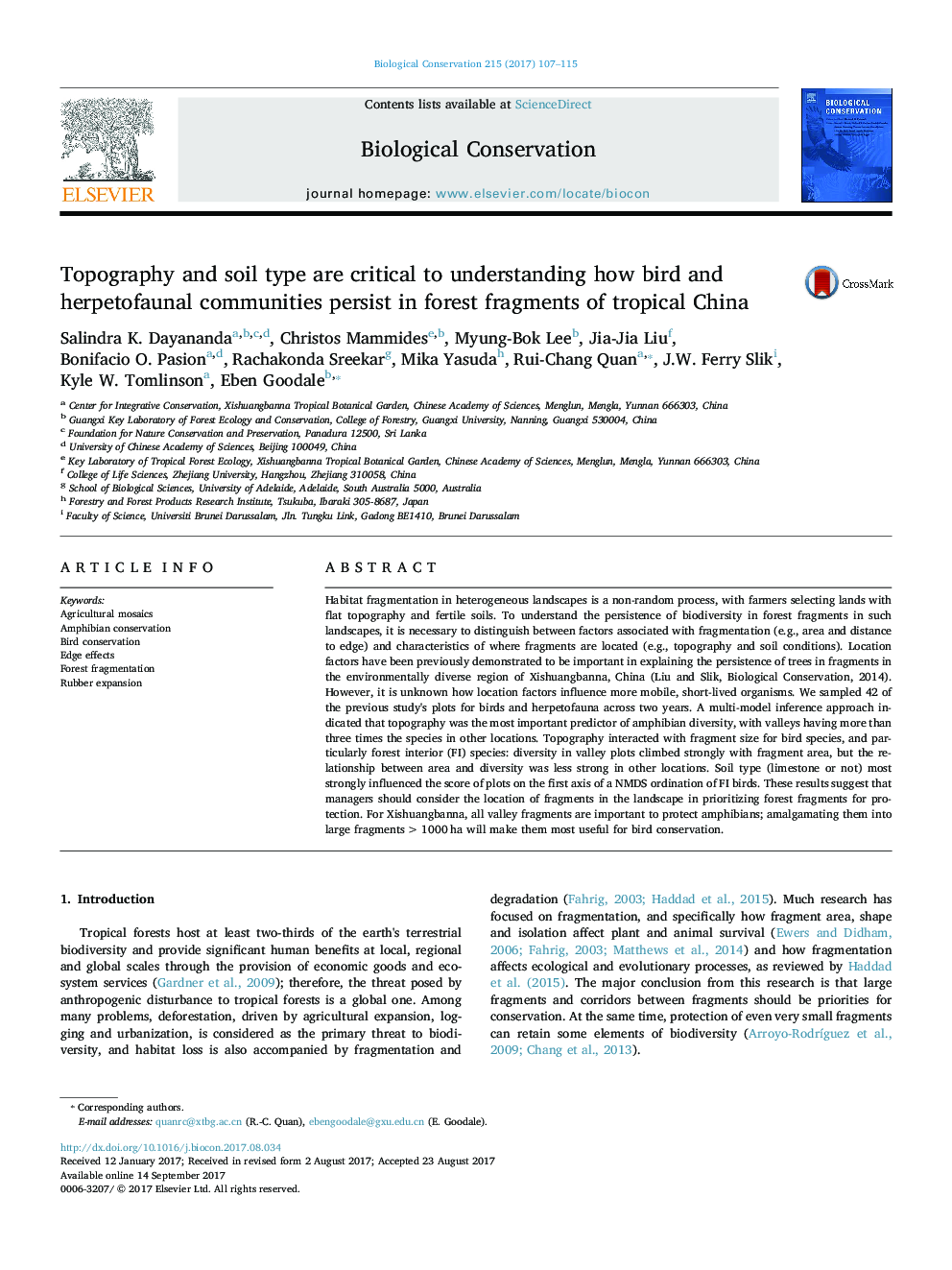| کد مقاله | کد نشریه | سال انتشار | مقاله انگلیسی | نسخه تمام متن |
|---|---|---|---|---|
| 5743027 | 1617890 | 2017 | 9 صفحه PDF | دانلود رایگان |
- Topography and soils affect where forest fragments are retained in a landscape.
- We show they affect how bird and herpatofaunal communities persist in fragments.
- Valley plots held >Â 3 times the number of amphibian species as other locations.
- Bird species richness increases in valleys with fragment area (>Â 1000Â ha highest).
- Even at small scales, location is important to prioritize fragment protection.
Habitat fragmentation in heterogeneous landscapes is a non-random process, with farmers selecting lands with flat topography and fertile soils. To understand the persistence of biodiversity in forest fragments in such landscapes, it is necessary to distinguish between factors associated with fragmentation (e.g., area and distance to edge) and characteristics of where fragments are located (e.g., topography and soil conditions). Location factors have been previously demonstrated to be important in explaining the persistence of trees in fragments in the environmentally diverse region of Xishuangbanna, China (Liu and Slik, Biological Conservation, 2014). However, it is unknown how location factors influence more mobile, short-lived organisms. We sampled 42 of the previous study's plots for birds and herpetofauna across two years. A multi-model inference approach indicated that topography was the most important predictor of amphibian diversity, with valleys having more than three times the species in other locations. Topography interacted with fragment size for bird species, and particularly forest interior (FI) species: diversity in valley plots climbed strongly with fragment area, but the relationship between area and diversity was less strong in other locations. Soil type (limestone or not) most strongly influenced the score of plots on the first axis of a NMDS ordination of FI birds. These results suggest that managers should consider the location of fragments in the landscape in prioritizing forest fragments for protection. For Xishuangbanna, all valley fragments are important to protect amphibians; amalgamating them into large fragments >Â 1000Â ha will make them most useful for bird conservation.
Journal: Biological Conservation - Volume 215, November 2017, Pages 107-115
